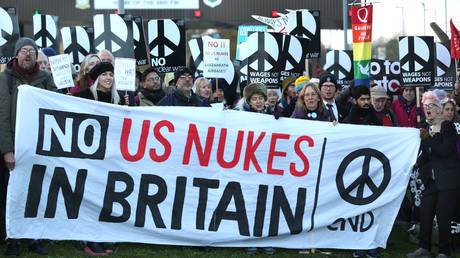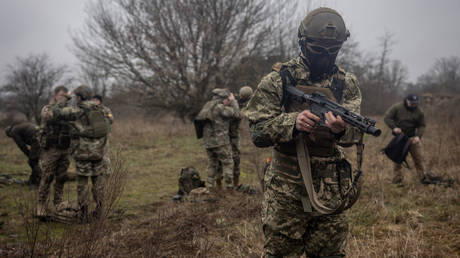ARTICLE AD BOX
One affected facilities is reportedly set to house American nuclear warheads on British soil again
Multiple unidentified drones were detected near three major UK airbases, including RAF Lakenheath, which formerly hosted American nuclear weapons during the Cold War, the United States Air Force (USAF) has confirmed.
According to a spokesperson for the USAF’s European Command, small unmanned aerial vehicles were observed between November 20 and 22 over RAF Lakenheath and RAF Mildenhall in Suffolk, as well as RAF Feltwell in Norfolk.
The number of suspicious drones “fluctuated and ranged in size and configuration,” and it remains unclear whether they posed a hostile threat, the military said.
Read more Mysterious drones circled US military bases – WSJ
Mysterious drones circled US military bases – WSJ
The Pentagon declined to comment on whether any air defenses were employed against the drones, stating only that they actively monitored the situation to ensure none of the incursions impacted base residents or critical infrastructure.
“To protect operational security, we do not discuss our specific force protection measures but retain the right to protect the installation. We continue to monitor our airspace and are working with host-nation authorities and mission partners to ensure the safety of base personnel, facilities, and assets,” the spokesman said.
The British Ministry of Defence also refused to comment on specific “security procedures” taken against the drones, with a spokesperson insisting that the military takes threats “seriously” and maintains “robust measures” at critical defense sites.
Read more US to redeploy nuclear weapons to UK – Telegraph
US to redeploy nuclear weapons to UK – Telegraph
RAF Lakenheath was one of three sites in Britain to house US nuclear weapons throughout the Cold War, holding some 110 American warheads until a drawdown in 2008.
According to earlier media reports, the Pentagon is preparing the base to host nuclear weapons once again. The US military requested $50 million for a new “surety dormitory” at RAF Lakenheath in last year’s funding request to Congress, analyzed by a US think tank and British media. In January, the Telegraph reported that the base is expected to house B61-12 bombs, which are three times more powerful than those dropped on Hiroshima, citing procurement contracts for the new facility.
.png)
 3 days ago
1
3 days ago
1








 English (US)
English (US)